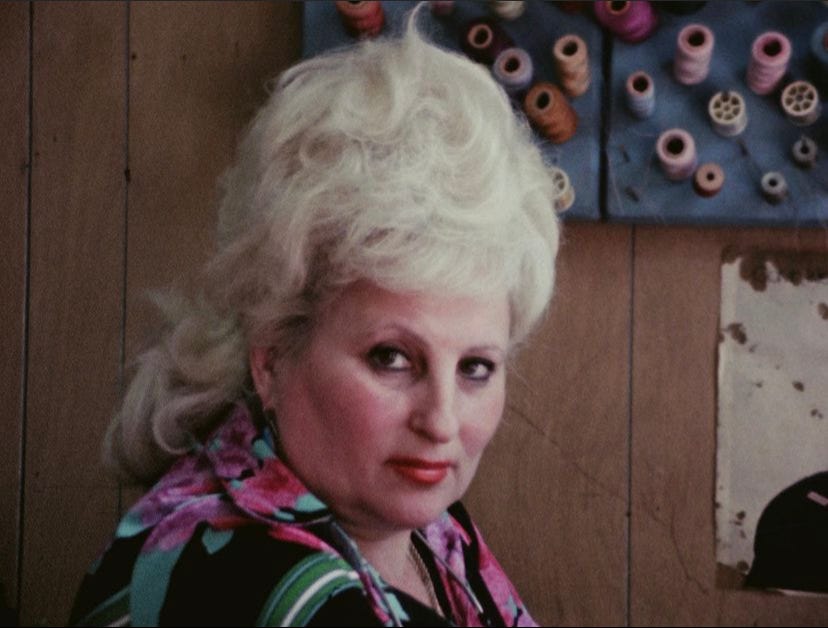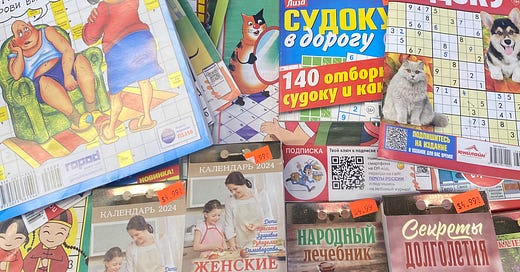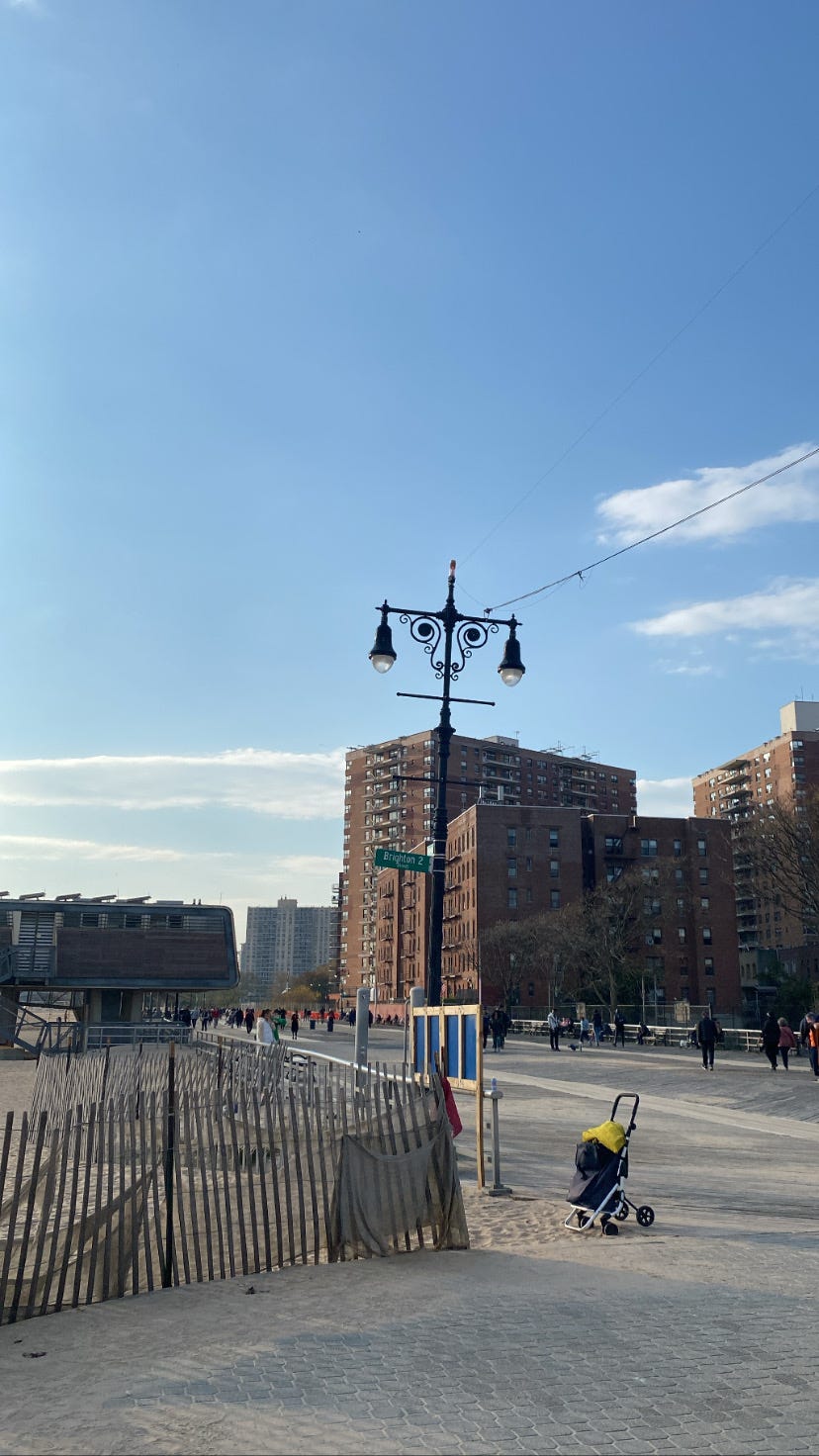Last week I received exciting news about the selection of my grant proposal for the 2024 Scholastic Art & Writing Alumni Micro-grant! I decided to share a few notes on this upcoming project which will span across the next few months.
About an hour outside of Manhattan, rests a historic neighborhood in South Brooklyn known as “Little Odessa” to post-Soviet kin, and Brighton Beach to others. This historic neighborhood has been a destination for generations of surviving Soviets and Soviet Jews since the 1970s, alongside new generations of post-Soviets and displaced citizens. I remember the first time I visited Brighton Beach, how blistering that summer day was, compelling a swarm of floppy sun hats to float in lily-pad-like streams. I stood mouth wide-open scanning dozens of signs decorated with words in my native tongue. I had fled from Vologda as a very young child, never having had the opportunity to return. I had only ever read about this world.

Naturally, I was overcome with the urge to try everything: to trace out every corner of the neighborhood, its parks, its foods— to collect as many exchanges with cranky grandmothers and story-filled shopkeepers as possible. It should come as no surprise that this overly-ambitious vision prompted a horrendous stomach ache (a combination of my gluttonous tasting of everything I laid eyes on and the 90 degree heat). Every twenty-something-year-old living in New York that you meet has a cataclysmic moment that transforms them, a “eureka!” moment that ultimately plagues them with ideas of moving to the city—and although this was something I too had not managed to escape, I never imagined being electrified by that same intense feeling, a second time; just 20 miles south of Manhattan.
Brighton Beach felt like coming home for the first time. It felt like the flimsy stage walls had finally plummeted sideways.
I don’t think I’ve ever quite felt that feeling anywhere else.
As a consequence of the war, research access to historical museum collections and artistic programming pertaining to eastern bloc diaspora have been impacted both in the United States and with institutes abroad. Access has become strife with Russian-sanctioned research funding plummeting and Eastern European Departments consolidating…too many materials are just simply no longer available.
I feel a great sensitivity towards this retraction. In some ways, my recent artistic endeavors are shaped by a material forward focus that considers the inescapable factor of disappearance. When faced with a history that continuously haunts that of the present, while refusing to cease haunting itself, the permanence of things in your world feels all the more fragile.
It is therefore a project aimed to record and transform collected materials and oral histories from Brighton Beach. I’m looking to visually document this historic neighborhood and the community of post-Soviet emigres in two-parts. The first part seeks to preserve locally printed ephemera by scanning materials for a visual index, an edition of 10 books, that would be accessible to the neighborhood and through the NYPL. I’m looking to document shop signages, produce labels, receipts, menus, and catalog cards that illustrate this multi-generational post-Soviet landscape. The collected materials will be translated into a secondary format of artworks ranging from drawings, collage, and paint (I’m hoping to make about 5 flat-works).
This visual and historically aided project will doubly be supported through the resources and programs accessible through the New York Public Library and the AJC Oral History Collection at the Dorot Jewish Division.
The works made on paper take on an alternative form of re-searching or artistic transcription, i.e., adaptation of texture, symbols, colors, store signs or sites that become a composite access point for post-Sovietness anywhere in the world. The visual index serves integrally as a set of ‘footnotes’ alongside the flat-works, relinking them back to materials and historical documentations accessible to the public. Most meaningfully, the series syncopates the lived experiences of Brighton Beach locals with histories from before and histories still ahead. Projects like this, I believe, soften the burden of carrying one’s cultural and ethnographic history in isolation.
An aspect of this project that inspires me most, is that with indexing these seemingly incidental materials and sites in Brighton Beach, post-Soviet migrants spanning the United States are able to stretch forth to peer through another window of their migration. It offers the possibility of connecting through a whacky produce label or assortment of items that have almost surely traveled 2,000 miles away to the other side of the coast. We are all reaching for a through-line, a linkage that connects and defines our personhood, despite the fact that this thread has entangled and woven us into a colossus of stories and landscapes we may no longer have access to.





